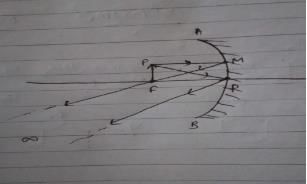Test: Reflection by Spherical Mirrors - NEET MCQ
10 Questions MCQ Test Physics Class 12 - Test: Reflection by Spherical Mirrors
A convex and a concave mirror of radii 10 cm each are facing each other and 15 cm apart. A point object is placed midway between them. Then position of the final image if the reflection first takes place at the concave mirror and then in the convex mirror is
When the object is located at the F of a concave mirror then
| 1 Crore+ students have signed up on EduRev. Have you? Download the App |
The focal length of a convex lens (refractive index = 1.5) in air is 20 cm. When immersed in water (refractive index = 1.33), its focal length will be
In mirrors how can we differentiate real image from the virtual image
A convex lens has a focal length of 10cm. What is the power of the lens?
In a concave mirror when the object is located beyond C the magnification is
An image is upright and reduced in size. Which mirror is used to form such an image?
|
97 videos|336 docs|104 tests
|


 When the object is placed at principal focus (F) of a concave mirror, a highly enlarged image is formed at infinity.
When the object is placed at principal focus (F) of a concave mirror, a highly enlarged image is formed at infinity.














